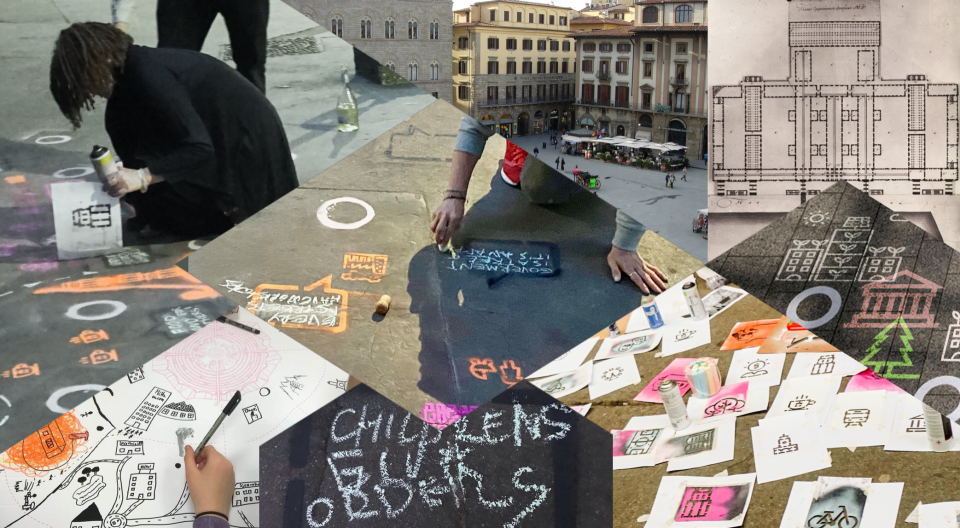FREQUENTLY ASKED QUESTION LIST
What is a Visual Assembly?
A visual assembly is a technique for political brainstorming using art and facilitation. The idea is to have a group of people gather in virtual space (i.e., Zoom) who will then collaborate to create an object at a specific location in physical space: for instance, floor grafitti in some public space.
What sort of facilitation does a Visual Assembly involve?
Two sorts. There will be online facilitators to conduct the meeting, and help make decisions; there will also be artistic facilitators on the actual physical location, ready to spray (prepared) stencils according to the instructions of the facilitators who lead the Visual Assembly in zoom.
What has to be prepared in advance:
Meeting facilitators will prepare questions in advance with the participation of interested parties.
Artists/performers will also decide on, and cut out stencils and arm themselves with chalk and chalk spray paints in advance.
Finally, a minimal visual framework has to be laid down on the physical location in advance.
What sort of physical space is appropriate for a Visual Assembly?
It depends on the situation. This space could be someone’s yard and the central city square.
What kind of topics might a Visual Assembly address?
Almost anything, but for now, we are working on the notion of redesigning or reimagining a “Care Unit” such as a hospital or clinic.
Our questions in this case are: can care could turn into violence, how a place of healing could become a prison? How can this be prevented?
We will have facilitators who would provide a framework for making collective decisions on this question to help to come up with a set of rules that could be written down with chalk and sprayed with stencils in public space.
What are the specific questions addressed in the on-line meeting and how might be reflected in visual form?
For example::
- how and, most importantly, by whom are decisions about care to be made: managers, ministers, doctors? All participants in the process, including nurses and cleaners? In what way?
- visually, this will take the form of a code of rules that will be written out in prepared speech balloons. Stencils of doctors, nurses, administrators, etc will be arranged in such a way as to illustrate the newly created forms of association
- how are the critical services arranged? I.e., is psychological support to be allocated to a separate department or distributed throughout the hospital?
- stencils representing psychological care can be distributed equally through the care units or concentrated in one place depending on the group’s decision
- which aspects of care (treatment) should be performed inside the hospital or care unit, what aspects are taken outside (consider here the famous Soviet home visits of doctors, or Chinese barefoot doctors).
- stencils represented doctors and patients could be arranged in different relationships with each other. Should more doctors work on preventative care outside of the Care Unit, to ensure the Care Unit is used as little as possible? Or should members of the community be in the habit of frequently the Care Unit, even to make it a social space with multiple functions, not entirely limited to physical health?
- how are fundamental resources like access to water or transportation to be managed?
- stencils can depict specific connections between the Care Unit and aspects of the larger society, accompanied by speech balloons for group decisions
[David R: insert questions about migrant care works here?]
How long will the Assembly take?
Maximum two hours to ensure people get bored or feel excluded.
What will remain after the Visual Assembly is over?
A transcription of the discussion, videos of the event, and the floor graffiti itself – either the grid or the stencils or both could be done either in chalk or in some more enduring form.
Visual Assembly is a spin-off of two projects: A4kids.org and Theyeswomen.org
V-A continues to develop techniques that initially emerged during A4kids.org workshops. It was called Table Cloths.
The Yes Women Group is a feminist art collective challenge ideas of public art and social justice.
